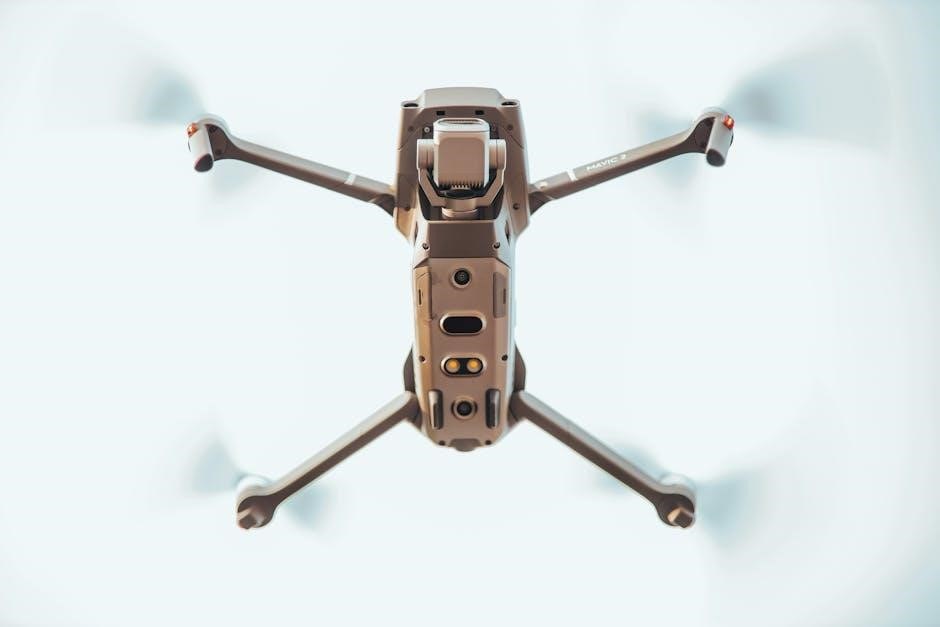three skeleton key story pdf
The Three Skeleton Key Story is a chilling tale of survival and suspense, set on a remote island with a lighthouse. Its eerie setting and supernatural elements captivate readers, blending historical drama with thrilling plot twists, making it a classic in horror literature.
1.1 Overview of the Story
The Three Skeleton Key Story revolves around a remote lighthouse on a small island, where three keepers face unimaginable horrors. The island’s eerie name stems from a tragic legend of three escaped convicts who met a grisly fate there. As the narrative unfolds, the keepers encounter supernatural phenomena and a relentless infestation of ravenous rats, which threaten their sanity and survival. The story masterfully blends elements of suspense, horror, and psychological tension, creating a gripping tale that explores human endurance and the terrifying forces of nature. Its chilling atmosphere and unpredictable twists keep readers on edge until the very end.
1.2 Historical Background of Three Skeleton Key
The tale of Three Skeleton Key is deeply rooted in historical context, drawing inspiration from the harsh realities of 19th-century penal colonies. The island’s ominous name originates from the tragic fate of three escaped convicts from Cayenne, a notorious French penal colony in South America. These men, seeking freedom, perished on the rocky shores under mysterious circumstances. Their skeletal remains became a grim landmark, symbolizing both the island’s perilous nature and the unforgiving justice of the time. This dark history adds depth to the story, grounding its supernatural elements in a unsettlingly real past.
1.3 The Significance of the Title
The title Three Skeleton Key carries profound symbolic weight, reflecting the story’s central themes of death, mystery, and isolation. The “three skeletons” refer to the remains of escaped convicts whose tragic fate is intertwined with the island’s history. “Key” signifies both the physical island and its role as a pivotal location in the narrative. The title evokes a sense of foreboding and doom, hinting at the supernatural events that unfold. It encapsulates the eerie atmosphere and the historical backdrop, drawing readers into a world where past and present collide in a deadly struggle for survival.

Setting of the Story
The story is set on a remote island called Three Skeleton Key, known for its dangerous waters, eerie lighthouse, and dark, supernatural history.
2.1 Geographical Location
Three Skeleton Key is a small, isolated island located off the coast of Cayenne, known for its treacherous waters and eerie landscape. The island’s name originates from the story of three escaped convicts who met a grim fate there. Its remote location and harsh environment create a sense of isolation, making it a perfect setting for the story’s suspenseful events. The lighthouse, central to the narrative, stands as a beacon on this desolate rock, surrounded by dangerous seas and swarming marine life, adding to the story’s tense and foreboding atmosphere.
2.2 The Lighthouse on Three Skeleton Key
The lighthouse on Three Skeleton Key stands as a lone beacon on a remote, rocky island. Its isolation and eerie surroundings make it a central element of the story. The lighthouse is both a refuge and a prison for its keepers, who face the constant threat of dangerous marine life and supernatural occurrences. The structure itself is imposing, yet vulnerable, as it withstands the relentless pounding of the sea and the swarms of ravenous sharks that infest the waters. The lighthouse becomes a symbol of survival and endurance in the face of overwhelming natural and supernatural forces.
2.3 The Atmosphere and Environment
The atmosphere of Three Skeleton Key is thick with tension and foreboding. The remote island, surrounded by shark-infested waters, creates a sense of isolation and dread. The environment is harsh and unforgiving, with the sea and wildlife posing constant threats. Night falls quickly, bringing eerie darkness and an oppressive mood. The setting amplifies the psychological strain on the characters, heightening the story’s suspense and horror elements. The natural world feels menacing, as if it’s conspiring against the survivors, adding to the claustrophobic and terrifying ambiance that defines the tale.

Main Characters
The story centers around the lighthouse keepers, who face unimaginable challenges, and the escaped convicts, whose presence escalates tension. These characters drive the plot’s survival narrative.
3.1 The Lighthouse Keepers
The lighthouse keepers are the backbone of the story, portrayed as resilient and duty-bound individuals. Their isolated existence on Three Skeleton Key creates a sense of vulnerability. The keepers must navigate not only the harsh environment but also the unexpected arrival of escaped convicts. Their resourcefulness and determination to survive are central to the plot. The narrative delves into their psychological state, revealing how they cope with the escalating tension and danger. Their interactions and decisions drive the story’s suspense, making them dynamic and relatable characters in the face of overwhelming adversity.
3.2 The Convicts
The convicts in Three Skeleton Key Story are portrayed as brutal and relentless individuals, adding a layer of tension and danger to the narrative. Escaping from Cayenne, they bring a sense of unpredictability to the isolated lighthouse setting. Their harsh nature and violent tendencies create immediate conflict with the keepers, escalating the story’s suspense. The convicts’ ruthless behavior forces the keepers to confront their survival instincts, highlighting themes of endurance and human conflict. Their presence is pivotal in driving the plot’s tension and testing the resolve of the lighthouse keepers in a desperate fight for survival.
3.3 Other Supporting Characters
Beyond the lighthouse keepers and convicts, other minor characters add depth to the narrative. These include locals from nearby towns and occasional visitors, whose interactions with the keepers provide context and foreshadowing. Their roles, though limited, enhance the story’s eerie atmosphere and contribute to the escalating tension. These characters often serve as a bridge between the isolated lighthouse and the outside world, offering glimpses of normalcy that contrast sharply with the unfolding horror. Their presence underscores the supernatural elements and heightens the sense of isolation, making the keepers’ ordeal even more compelling and intense for readers.

Plot Structure
The story unfolds as a gripping narrative, detailing the lighthouse keepers’ desperate battle against invading convicts. Tense dialogue and escalating conflicts build toward a suspenseful showdown, heightening the drama.
4.1 Exposition
The story begins with the introduction of a remote lighthouse on Three Skeleton Key, a small, eerie island with a dark history. The narrator, a lighthouse keeper, shares the island’s chilling backstory, explaining how it got its name from three escaped convicts who met a gruesome fate. The keepers, tasked with maintaining the lighthouse, are portrayed as isolated figures, unaware of the impending danger. The exposition sets a tense atmosphere, hinting at the supernatural and the island’s deadly reputation, while introducing the main characters and their motivations, laying the groundwork for the suspenseful events to unfold.
4.2 Rising Action
The rising action intensifies as a mysterious ship arrives, carrying escaped convicts seeking refuge. The lighthouse keepers, initially wary, attempt to assist but soon realize the danger. The convicts’ presence disrupts the island’s eerie calm, and tensions rise. The keepers must navigate their survival while confronting the prisoners, who are desperate and unpredictable. The supernatural elements of the island begin to surface, adding to the growing sense of dread. The conflict escalates as the keepers and convicts clash, setting the stage for a thrilling and terrifying confrontation that tests their will to survive.
4.3 Climax
The climax unfolds as the lighthouse keepers confront the escaped convicts and the terrifying supernatural forces haunting the island. The tension peaks when the keepers, desperate to protect themselves, resort to drastic measures. The convicts, driven by desperation, attempt to seize control, leading to a violent confrontation. Simultaneously, the eerie presence of the three skeletons and the swarming rats heighten the chaos. The keepers’ resolve is tested as they face both human and supernatural threats, culminating in a tragic and devastating outcome that leaves only one survivor to recount the horrifying events, emphasizing the island’s deadly legacy and the power of nature’s wrath.
4.4 Falling Action
After the tragic confrontation, the survivors secure the lighthouse, attempting to restore order. The supernatural presence begins to wane as the rats retreat, signaling the end of the immediate threat. The narrator, reflecting on the carnage, realizes the gravity of their ordeal. Help arrives as a ship approaches, offering rescue and relief. The keepers, though scarred, find solace in their survival. The falling action underscores the resilience of the human spirit amid unimaginable horrors, setting the stage for the story’s haunting conclusion and the narrator’s lasting trauma from the events on Three Skeleton Key.
4.5 Resolution
The resolution brings closure as the survivors are rescued, though deeply scarred by their ordeal. The narrator reflects on the horror they endured, grappling with the loss of their comrades. The lighthouse, once a symbol of safety, is now a haunting reminder of the supernatural forces they faced. The story concludes with a sense of lingering dread, as the island’s dark reputation endures. The resolution underscores the themes of survival and the unrelenting power of nature, leaving readers with a chilling reminder of the events on Three Skeleton Key.

Themes and Motifs
The story explores themes of isolation, survival, and the supernatural, while motifs of suspense and the power of nature dominate the narrative, heightening tension and dread.
5.1 Survival and Human Endurance
The story underscores the resilience of human spirit amidst extreme adversity. The lighthouse keepers, isolated and endangered, exemplify survival instincts, enduring relentless threats from convicts and nature. Their struggle to maintain order and safety highlights the psychological and physical toll of isolation. The narrative emphasizes how survival requires adaptability, courage, and mental fortitude. The supernatural elements, like the eerie presence of skeletons, amplify the tension, testing the characters’ ability to endure. Ultimately, the tale portrays survival as a testament to human endurance, where the will to live prevails despite overwhelming odds.
5.2 The Power of Nature
Nature emerges as a formidable force in the story, shaping the characters’ fate and setting. The isolated lighthouse on Three Skeleton Key is at the mercy of the sea, with waves crashing relentlessly. The environment is harsh and unforgiving, creating a sense of dread. The supernatural elements, like the glowing skeletons, are intertwined with natural phenomena, heightening the eerie atmosphere. The story highlights nature’s unpredictability and its ability to inspire fear and awe. The clash between human resilience and natural forces underscores the theme, reminding readers of nature’s indomitable power and its role in shaping human destiny.
5.3 Suspense and Tension
The story masterfully employs suspense and tension to keep readers engrossed. The isolated lighthouse setting and the looming threat of the convicts create an atmosphere of dread. The narrator’s recounting of past events, such as the origin of the island’s name, builds anticipation. The supernatural elements, like the glowing skeletons, heighten the eerie mood. The clash between the keepers and the convicts escalates tension, while the confined space of the lighthouse intensifies the psychological strain. The author’s use of foreshadowing and pacing ensures that suspense permeates every chapter, leaving readers anxiously awaiting the resolution of the conflict.
5.4 The Supernatural Element
The supernatural element in Three Skeleton Key adds a haunting layer to the narrative. The story’s title originates from the eerie tale of three escaped convicts whose skeletons allegedly dance on the island, glowing with an otherworldly light. The lighthouse’s isolation amplifies the eerie atmosphere, with strange noises and unexplained phenomena contributing to the tension. These supernatural hints create a sense of dread, blending reality with the unknown. The author’s subtle inclusion of these elements enhances the psychological horror, leaving readers questioning what is real and what is imagined, thus deepening the story’s chilling impact and timeless appeal.

Literary Analysis
The Three Skeleton Key Story masterfully employs suspense and eerie descriptions to craft a haunting atmosphere. The author’s vivid portrayal of isolation and supernatural elements creates a gripping narrative that captivates readers, blending psychological tension with the horror of the unknown, making it a standout in literary fiction.
6.1 Use of Foreshadowing
The Three Skeleton Key Story masterfully employs foreshadowing to build suspense and anticipation. From the eerie description of the island’s dark history to the ominous portrayal of the lighthouse’s isolation, the narrative subtly hints at the impending dangers. The mention of phosphorescent skeletons and the relentless sharks foreshadows the terrifying events that unfold. The author’s use of vivid imagery, such as the “gray-green, scum-dappled” water teeming with Devilfish and Portuguese man-of-war, creates an unsettling atmosphere, preparing readers for the horror to come. This technique heightens tension, making the story’s climax both inevitable and chilling.
6.2 Symbolism in the Story
The Three Skeleton Key itself symbolizes death and the supernatural, reflecting the island’s dark history. The lighthouse represents isolation and the fragile refuge of the keepers. Sharks embody relentless danger and nature’s indifference. The escaping convicts symbolize fear of the unknown, while rats represent inevitable doom and the breakdown of order. These symbols weave together to create a haunting narrative that explores survival, human endurance, and the supernatural, enriching the story’s themes and atmospheric tension through powerful imagery and underlying meanings.
6.3 The Author’s Writing Style
The author’s writing style in Three Skeleton Key Story is masterful in crafting suspense and tension. Vivid descriptions of the island’s eerie atmosphere and the lighthouse’s isolation heighten the sense of dread. The narrative voice is direct yet evocative, drawing readers into the keepers’ desperate struggle for survival. Foreshadowing is skillfully woven throughout, hinting at the supernatural elements and impending doom. Dialogue is minimal but impactful, allowing the setting and actions to dominate. The author’s concise prose accelerates the pacing, creating a gripping tale of horror and endurance, while the supernatural undertones add depth to the human drama unfolding on the isolated key.

Cultural and Historical Context
The story is set on Three Skeleton Key, a remote island with a dark history tied to escaped convicts and supernatural lore, reflecting the eerie isolation of its setting.
7.1 The Setting’s Historical Relevance
The story is set on Three Skeleton Key, a remote island with a dark history tied to escaped convicts and supernatural lore. The island’s name originates from the skeletons of three convicts who perished there after fleeing Cayenne. The lighthouse, central to the plot, symbolizes isolation and resilience. Historically, the setting evokes the harsh realities of 19th-century penal colonies and maritime challenges, grounding the narrative in a gritty, atmospheric past. This historical backdrop enriches the tale, blending fact and fiction to create a hauntingly authentic world that captivates readers with its eerie ambiance and tragic legacy.
7.2 The Story’s Place in Literature
Three Skeleton Key holds a significant place in literature as a masterclass in suspense and supernatural storytelling. Its eerie setting and psychological tension have influenced numerous horror and thriller writers. The story’s ability to blend historical elements with chilling narratives has made it a favorite among readers and scholars alike. It is often studied for its use of foreshadowing, atmospheric detail, and exploration of human endurance. The tale’s enduring popularity highlights its timeless appeal, solidifying its reputation as a cornerstone of suspense literature and a must-read for fans of the genre.

Adaptations and Interpretations
Three Skeleton Key has been adapted into radio dramatizations and featured in horror anthologies, maintaining its eerie atmosphere and suspenseful charm across formats, captivating diverse audiences consistently.
8.1 Film and Stage Adaptations
The Three Skeleton Key Story has been adapted into radio dramatizations, preserving its eerie atmosphere and suspenseful charm. While no major film adaptation exists, its haunting themes have inspired stage plays. The story’s minimalist setting and supernatural elements make it challenging to translate to screen, but its tense narrative has captivated audiences in audio formats. Fans continue to envision its potential as a cinematic masterpiece, emphasizing its timeless appeal and the enduring horror of its isolated setting and terrifying encounters.
8.2 Reader Interpretations and Reviews
Readers praise Three Skeleton Key for its masterful suspense and chilling atmosphere. Many highlight its ability to evoke fear through psychological tension rather than overt horror. The supernatural elements and isolated setting are frequently cited as key to its eerie charm; Some reviewers note the story’s slow-burn approach, building dread incrementally. While opinions on the pacing vary, most agree on its effectiveness in crafting a sense of claustrophobia and desperation. The story’s exploration of survival and human endurance resonates deeply, leaving a lasting impression. Its timeless appeal continues to captivate readers, solidifying its place as a horror classic.

The Story’s Impact
Three Skeleton Key has left a lasting impact on horror literature, influencing many writers and adaptations. Its chilling narrative continues to captivate readers, ensuring its enduring popularity.
9.1 Popularity and Reception
Three Skeleton Key has garnered significant popularity for its gripping narrative and eerie atmosphere. Readers praise its ability to blend horror with realistic survival scenarios. The story’s dark themes resonate deeply, making it a favorite among horror enthusiasts. Its enduring appeal lies in its suspenseful storytelling and supernatural elements. Critics have praised its vivid descriptions and the emotional depth of its characters. Despite its macabre undertones, the story has captivated audiences for decades, solidifying its place in horror literature. Its influence can be seen in various adaptations and works inspired by its chilling plot and themes.
9.2 Influence on Other Works
Three Skeleton Key has left an indelible mark on literature and popular culture. Its unique blend of suspense, survival, and supernatural elements has inspired numerous adaptations and influenced horror writers. Many authors have cited the story as a source of inspiration for crafting eerie settings and tense narratives. Filmmakers have also drawn from its themes, creating movies with similar isolated locales and terrifying encounters. The story’s ability to evoke fear and tension has made it a benchmark for horror storytelling, ensuring its legacy endures in modern media and literature. Its influence continues to be felt across genres, solidifying its cultural significance.
Three Skeleton Key Story is a haunting tale of survival, isolation, and the supernatural, leaving a lasting impact on readers. Its themes of endurance and nature’s power resonate deeply, ensuring its enduring popularity in horror literature.
10.1 Summary of Key Points
Three Skeleton Key Story revolves around lighthouse keepers on a remote island, battling an infestation of ravenous rats and escaped convicts. The eerie setting and supernatural elements heighten suspense, while the title reflects the island’s haunting history. Themes of survival and human resilience against nature’s fury are central. The story’s chilling narrative and vivid descriptions make it a standout in horror literature, leaving readers with a lasting sense of dread and awe at the power of the natural world. Its enduring popularity underscores its impact on the genre.
10.2 Final Thoughts on the Story’s Significance
Three Skeleton Key Story is a masterful blend of psychological tension and physical horror, leaving a lasting impact on readers. Its themes of survival, human resilience, and the supernatural resonate deeply, while its chilling narrative and vivid descriptions make it a standout in horror literature. The story’s ability to evoke fear through its eerie setting and relentless conflict underscores its significance. As a classic tale, it continues to captivate audiences, proving its enduring influence on the genre. Its exploration of human endurance against nature’s fury remains a powerful and unforgettable experience for readers worldwide.

Where to Find “Three Skeleton Key Story PDF”
The Three Skeleton Key Story PDF can be accessed through official sources like Amazon, Google Books, or Project Gutenberg. Ensure legal access by purchasing or borrowing from verified platforms.
11.1 Official Sources and Downloads
Accessing the Three Skeleton Key Story PDF is straightforward through reputable platforms. Amazon Kindle and Google Books offer digital copies for purchase or borrow. Additionally, websites like Project Gutenberg provide free access to classic works. Ensure legality by downloading from these verified sources. Always verify the publisher to avoid unauthorized versions. These platforms offer secure and high-quality downloads, preserving the story’s original suspense and literary value. Use search terms like “Three Skeleton Key PDF free” or “download Three Skeleton Key Story” to find these sources efficiently.
11;2 Legal Considerations for Accessing the PDF
Accessing the Three Skeleton Key Story PDF requires adherence to copyright laws. Ensure downloads are from authorized sources to avoid piracy. Many classic works are now in the public domain, allowing free access. However, modern editions may still be under copyright. Always verify the legality of the source to avoid infringement. Respect intellectual property rights by purchasing or borrowing from reputable platforms. Unauthorized downloads can lead to legal consequences. Support authors and publishers by accessing content legally, ensuring the story’s legacy endures responsibly. Always prioritize official sources for a guilt-free reading experience.


















































